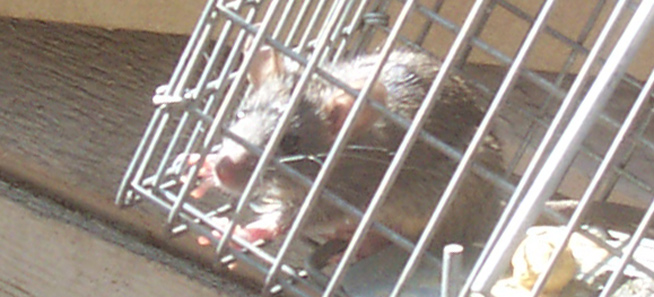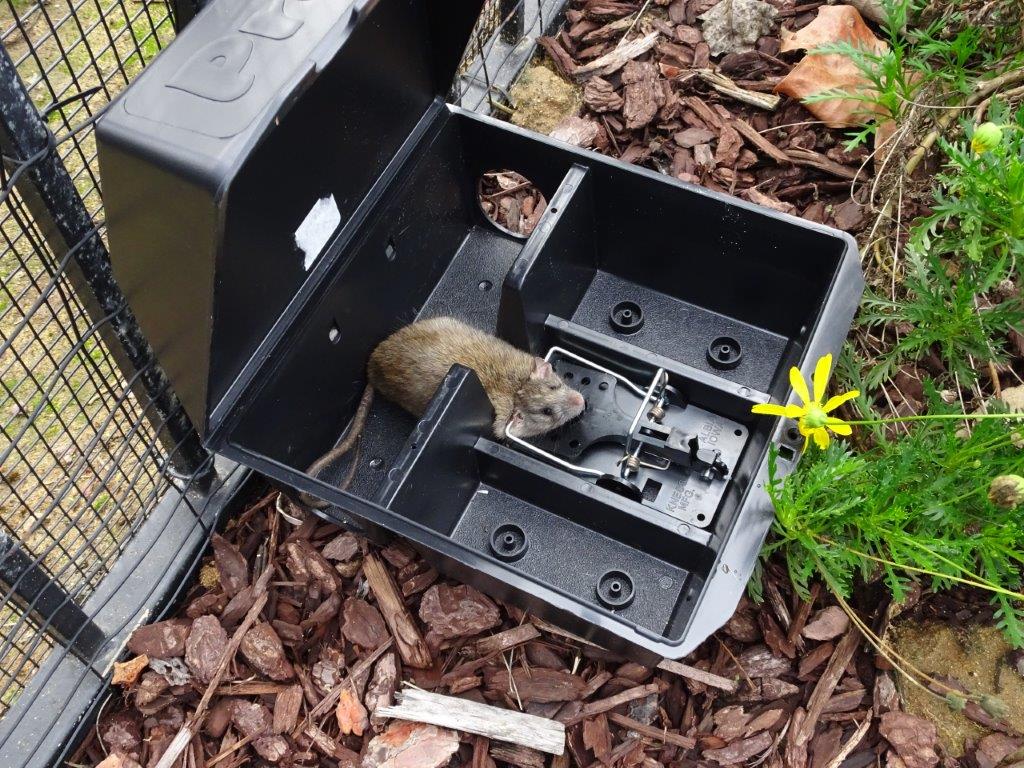There are a few ways in which you can get rid of rats without killing them, but as you'll soon learn, things mightn't be as clear cut as you first may have thought. Although you might wish to take the most humane approach possible to getting rid of these rodents from your commercial or residential property, snap traps - killing them - might seem end up being the most logical solution in the end.

Live Cage Traps
These might seem like a humane approach, right? You simply trap a rat, drive it miles away from your home, and then release it again, leaving it to go about in the wild and live a long and happy life.
Life isn't as simple as that, unfortunately.
The chances are, the rat won't be able to find food or water in it's new habitat, and it won't have the pheromones in the urine left behind by the rats that it knows from its own territory - the area around your home. It won't be able to find shelter. It also won't know what half the predators are that it'll likely come up against. How often do you see owls, hawks and eagles in residential and well built up areas? Rarely. Now, all of a sudden, your humane approach to rat removal has ended up with a rather violent death, the rat being the creature that's died, and the owl being the one victorious.
It might seem like nature has run it's course, right? Wrong again. What happens it that rat had been poisoned before? Perhaps you'd put poison down before in a bid to get rid of them and found it hadn't worked, or just couldn't relish the thought of dealing with dead rats, both adult and baby alike? Well, by eating that poisoned rat, the owl could suffer with secondary poisoning and then die.
If you had just used a snap trap, none of this would have happened.
There is a good chance that, with live cage traps, your relocated rat will just die. It'll either come up against a predator it hasn't faced in a while, if ever, and then come out worse off, or it won't be able to find everything it needs in order to stay alive - food, water, shelter, companionship, etc. Rats have been shown to be very social creatures, and they need their social group around them in order to flourish and survive.
We haven't finished yet either. Those live cage traps, depending on the kind you go for, often do not work. If they are those large plastic contraptions, often marketed as humane rat and mouse traps, there's a good chance the rat will be so wary about them, that it won't even go anywhere near them. If you go for an actual metal cage trap, there's a good chance the rat will smash and slam itself around in the cage, desperately trying to find a way out, and then it will injure itself in the process. Once again, death or serious injury has been caused. Once again, it's not quite the humane approach you had in mind, right?
Snap Traps
These are not humane if you want the rat to live. However, if you want the rat to have a death that is pain-free and over in seconds, snap traps are the answer. If relocation doesn't work, and live cage traps are generally more damaging than they are good, why wouldn't you want to solve the problem quickly, quite literally a snap?
Go back to the Rats in the Attic home page.

How you should handle pests can vary depending on where you come from or what method you want to use. Admittedly, rats can be very troublesome to handle especially when they are causing harm to your property. Some people don’t mind killing a rat, but others would rather get rid of them humanely without having to cause them much harm.
If you’re looking to get rid of rats without having to kill them directly, here are a few suggestions you can try out:
- Use scents to repel rats.
Although rats don’t seem to be bothered by much, they are actually sensitive when it comes to smell and taste which you can use to your advantage. One way to repel a rat is by creating mixtures of the scents they don’t like or simply placing it where they are found.
For the scents that come from oil, it would be best to make a mixture that you can use to spray around the area of concentrated rat activity. This way your property won’t be filled with too much of the scent. You can also use chopped onions, garlic, and even pepper flakes to spread and place in these areas.
When the scent is too much for the rats to handle, they will eventually leave the property. Continue to make use of these to keep them away from your house for longer periods of time.
- Make use of live or glue traps.
Not every rat trap out there is made to kill the rodents. Some traps can keep the rat alive or only partially injured. Live traps are cage mechanisms that are commonly used to trap a rat without having to kill it. This is because the cage will simply close when the rat enters or bait is taken. Using this will also make it easier for you to transport the rat outside.
Another are glue traps. These glue boards, however, can harm the rat depending on how much of their body has been stuck to the glue. It’s also important to take note that a glue trap may still potentially kill the rat if you keep them stuck there for longer periods of time. To prevent this, be sure to check for a rat in the trap every now and then and immediately release the rat outside or someplace else once you find them there.
- Keep your home clean and rat-proof.
Lastly, there would be no need for rat extermination if the infestation can’t happen in the first place. Before rats try to enter your property, make sure there isn’t anything in the house that can potentially attract rats.
This includes checking the exterior and interior of the home for any holes, which you should cover up with sturdy materials and seal, keeping your property clean as frequently as possible, and even setting your garbage a few feet away from your home to keep the rats from turning to your home when they make an attempt to scavenge the trash for food.








